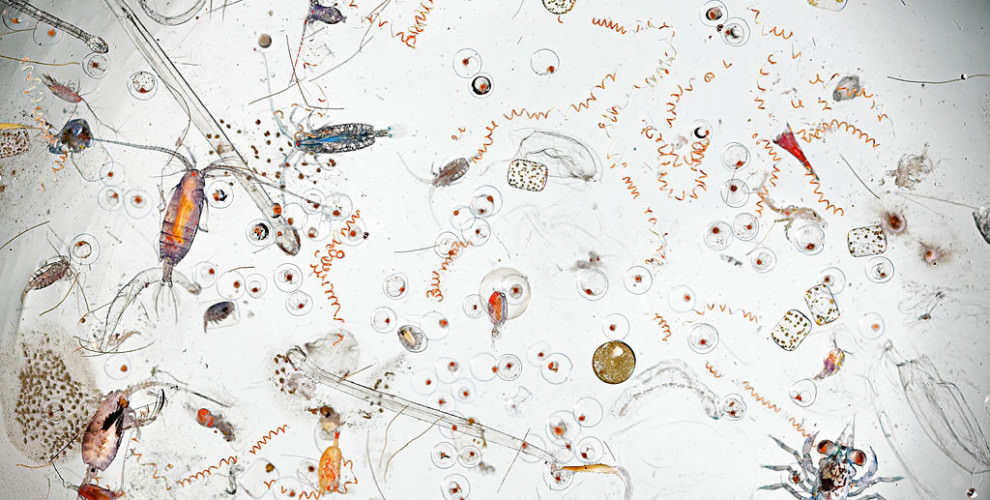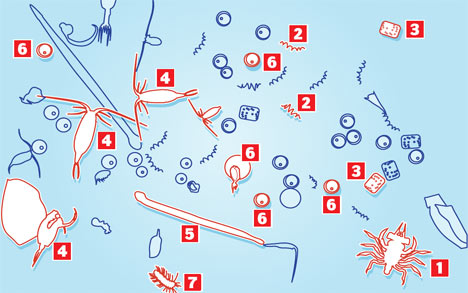
Extraordinary Photograph of Sea Water Magnified 25 Times
in Blog by Travis Fillmen
In our industry and hobby, we often find ourselves diving into underwater and macro photography, whether it be for fish, corals, plants, or other forms of aquatic life. This is one such instance where David Liittschwager, an accomplished award-winning photographer for National Geographic, has created an image showing the microfauna that exists within a single drop of seawater!
By magnifying the seawater sample 25 times, Liittschwager was able to capture bacteria, worms, fish eggs, crab larva, diatoms, and a whole host of other aquatic life – and you thought it was only salt that made seawater salty!

Here is a breakdown of the organisms in this shot:
- Crab Larva: Less than a quarter of an inch long, this delicate, transparent arthropod has a long way to go before it reaches maturity and yet its various body parts are already recognizable. Tiny pincered claws can be clearly seen and so can a pair of vivid bug-eyes, their multi-faceted compound lenses just discernible.
- Cyanobacteria: These coiled filaments are representatives of some of the most primitive life forms on Earth.Among the very first organisms to have evolved, cyanobacteria evolved a way of harnessing the power of sunlight to produce sugars – a process called photosynthesis, which liberates oxygen into the atmosphere.The billions of cyanobacteria in the oceans are responsible for producing a large proportion of oxygen to this day.
- Diatoms: It is impossible to calculate how many individual diatoms are alive in the world's oceans at any one time – the number runs into quadrillions. These small, boxy single-celled organisms are a type of algae, encased in a silica cell wall of great beauty. When they die, these tiny cell walls sink to the bottom of the sea, where they may be compacted to form rock.
- Copepods: These bug-like creatures are the most common zooplankton (animal plankton) and may be the most important animals in the oceans, as they form the most abundant source of protein. They are tiny, shrimp-like crustaceans, with a teardrop-shaped body and large antennae. Copepods are energetic swimmers, have a well-developed nervous system and engage in vigorous attempts to evade capture. They form the basic foodstuff of countless fish species. Some scientists believe that, taken together, copepods would form the largest single animal mass on Earth.
- Chaetognaths: These long, translucent organisms are arrow worms, predatory marine animals that form a large constituent part of the plankton. For plankton they are big – an eighth of an inch to five inches in length. They have a nervous system, two eyes, a mouth equipped with teeth and two tiny spines either side of their heads with which they grapple their prey (smaller plankton). Some can even inject paralytic venom.
- Fish Eggs: Nearly all fish lay eggs, although a few (including some sharks) give birth to live young. A few species protect and nurture their eggs (most notably seahorses, where the male takes on this role). But most fish species release huge numbers of fertilised eggs into the open sea, a large percentage of which will be eaten.
- Marine Worm: A multi-segmented polychaete equipped with dozens of tiny, hair-like appendages with which it propels itself through the water.


